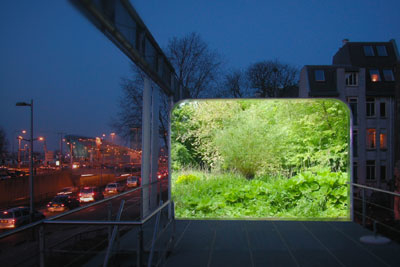This viewpoint has been open to question for a very long time. In the twentieth century, this was comprehensively illustrated by artists such as Marcel Duchamp or Andy Warhol. They viewed the production and perception of art in direct relationship to the disciplines of mass and media culture.
The myth of autonomous art is stubborn however: how external conditions of art and its interaction with other domains (those of media and technology, for example) influence the internal structure of the work of art. This is put to the test over and over again in different forms. Current, digital culture likewise begs new questions: what are the implications and possibilities of digital code, or of observation through media? How are traditional, humanistic ideas about the nature of artistry and art re-envisioned by developments within artificial intelligence and artificial life for example?
Erwin Driessens & Maria Verstappen became acquainted with work such as Breed en Tickle in which they experimented with Artificial Life and robotics. They were motivated by the wish to free themselves from a fossilised system of art. Taking a desire for a meta-creative system where aesthetic expression and experience is detached from the individual artist as starting point, Driessens and Verstappen discovered ‘life out there’ both literally and metaphorically. They encountered unforeseen autonomous expressions within the artificial universe they trigger, generated by independently operating processes.
Frankendael forms part of a project for which the artists documented a number of locations in the Amsterdam park of Frankendael over one year. Each scene was repeatedly photographed with a digital camera from the same position and at the same time of day, around noon. With software they had developed, they edited each series of shots into a 9 minute ‘film’ making changes in seasons and landscape visible.
By systematically computerising and formalising observation the Frankendael films did not become a romantic or subjective consideration of nature, but rather studies of the spontaneous course of nature, of the emergent and entropic processes underlying it. Manifest change is the reflection of the internal structure of nature, of nature as meta-creative system.

Yet in order not to lapse into neo-romantic or techno-utopian transports it is of crucial importance to recognise in the Frankendael films that a conceptual inversion simultaneously plays a role: nature interacting with the camera, the software and the editing displays itself as an artificial life-system or as a universe in which natural qualities can only be exposed through artificial means and an artificial vision. Liberating vision occurs via the making of it artifice. The essence of these ‘nature films’ lies in this.
translation Helen-Anne Ross
